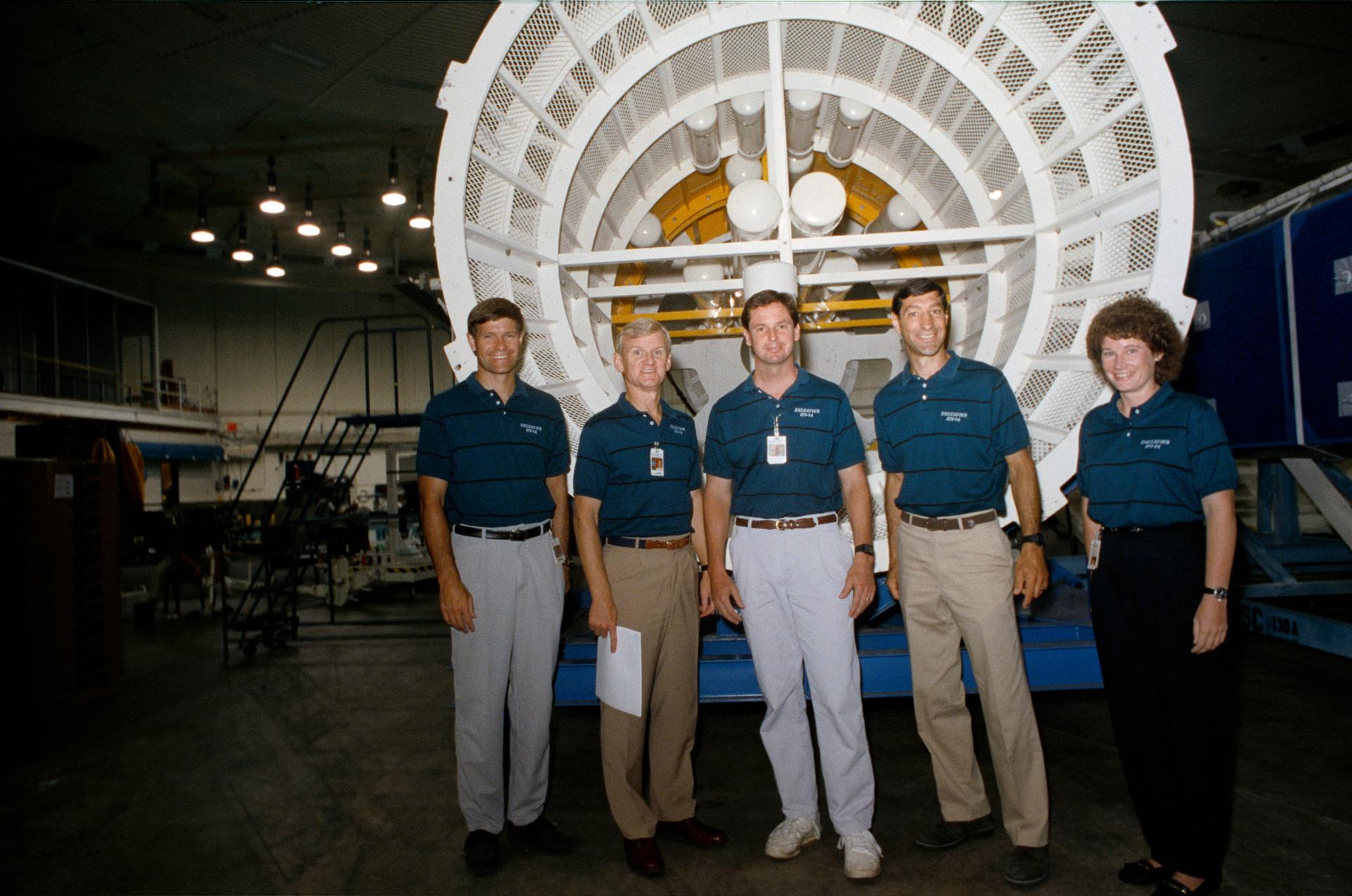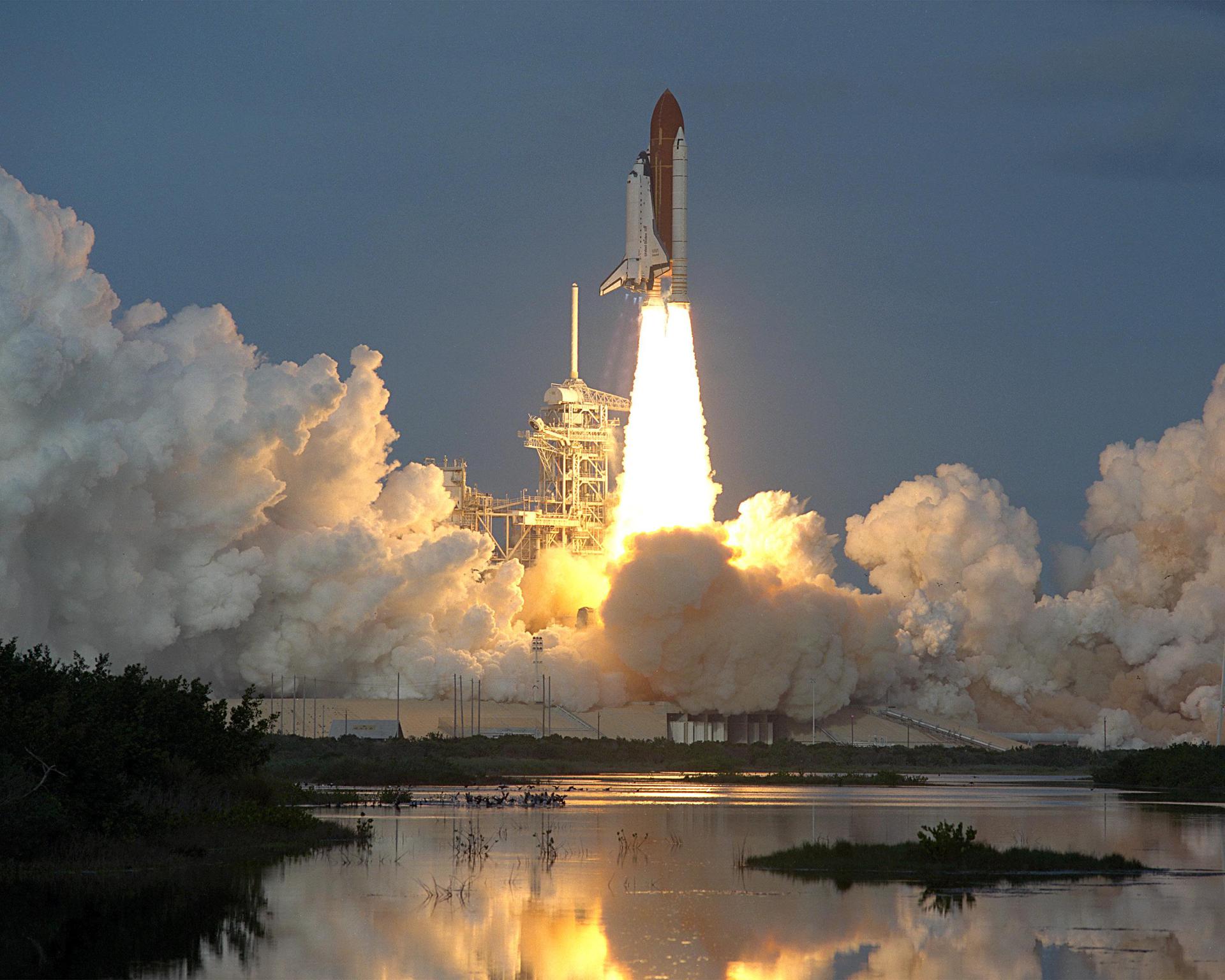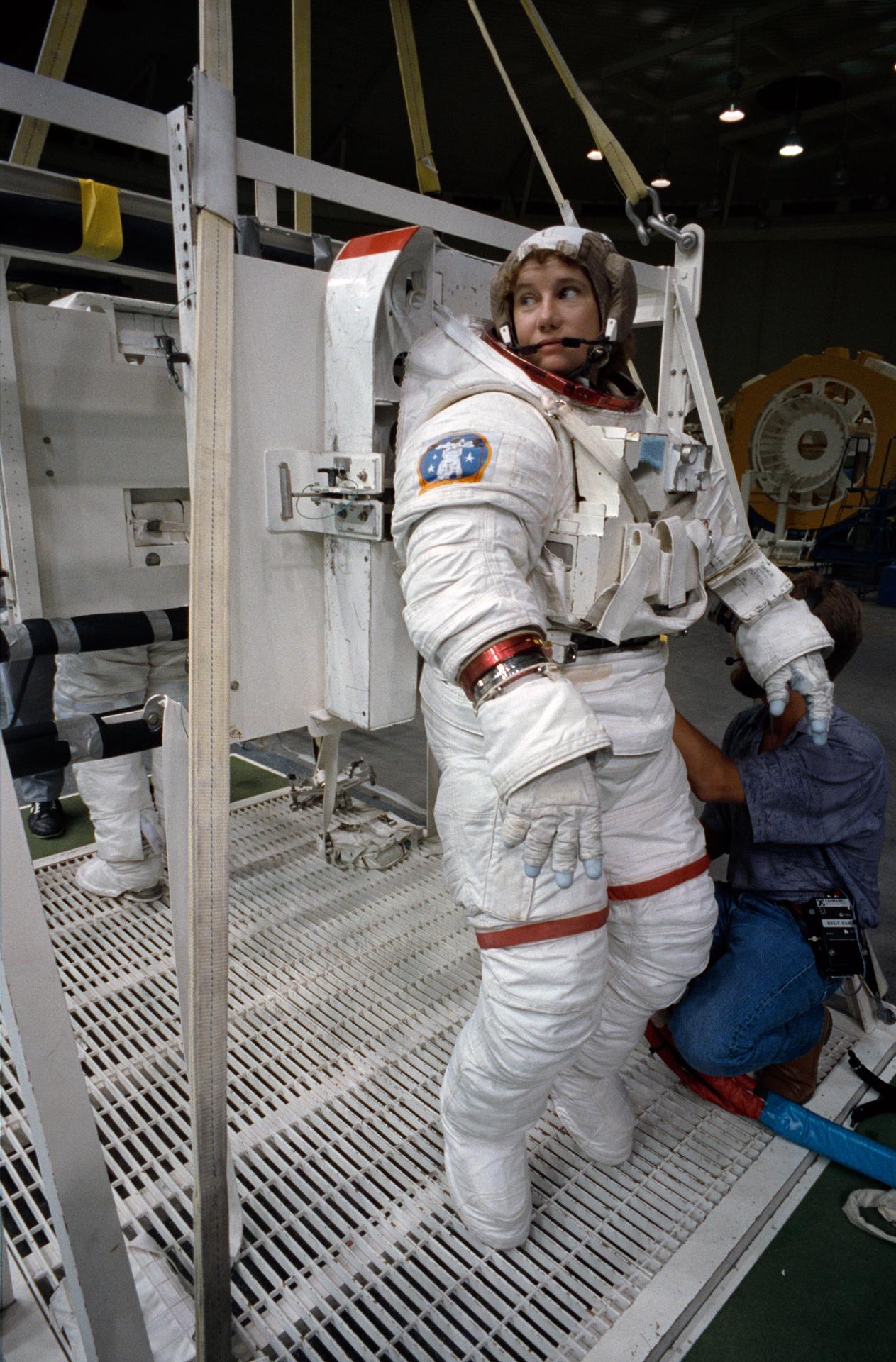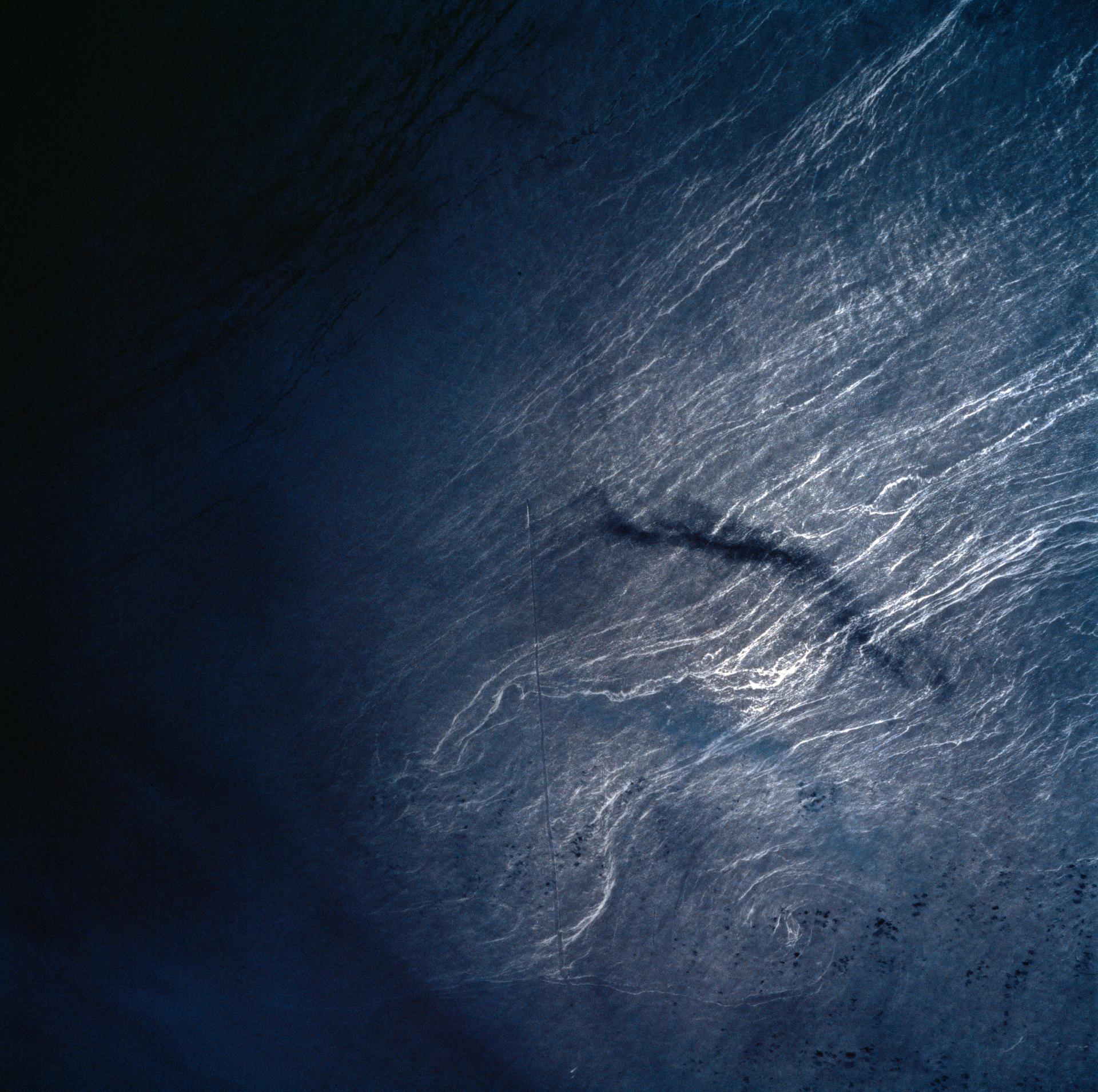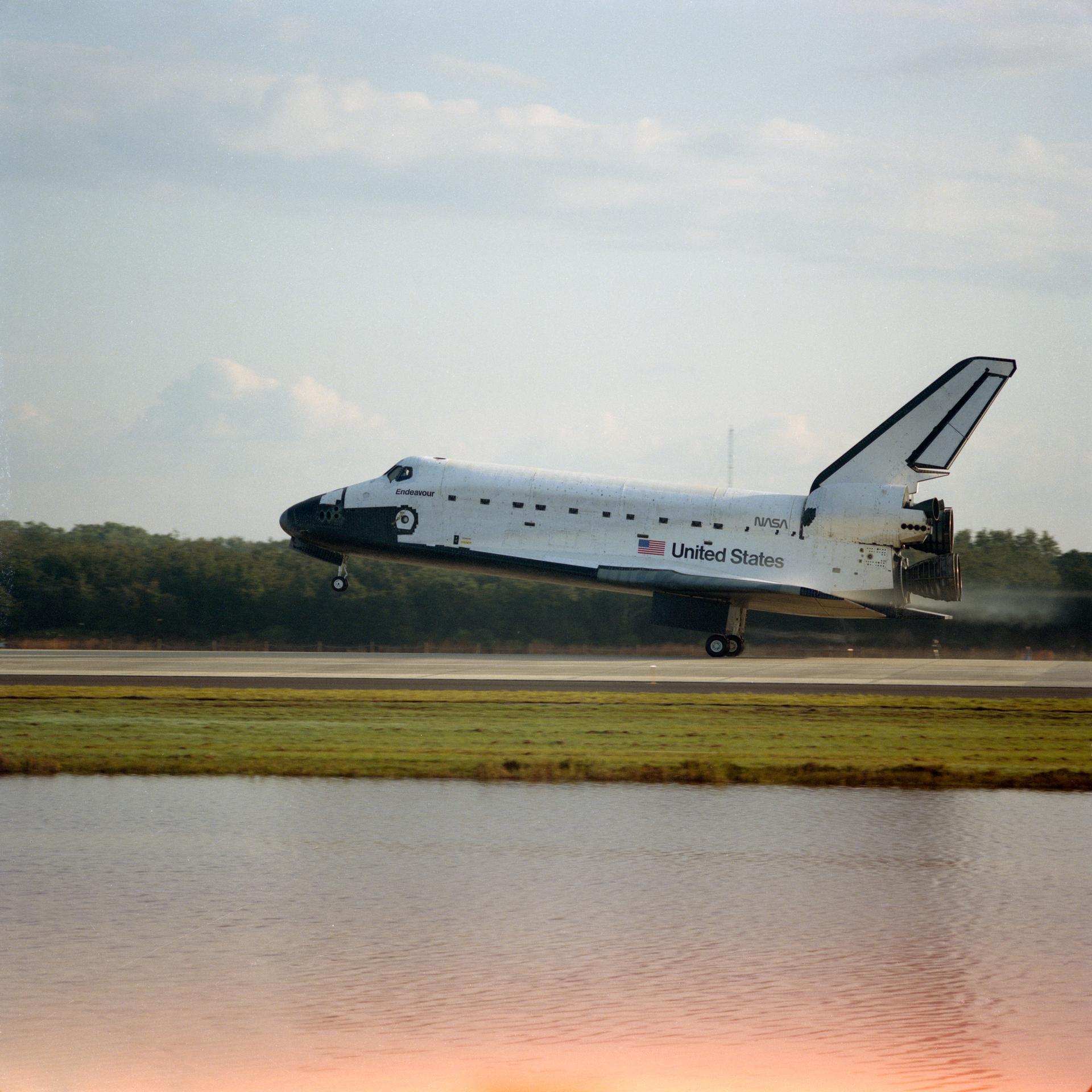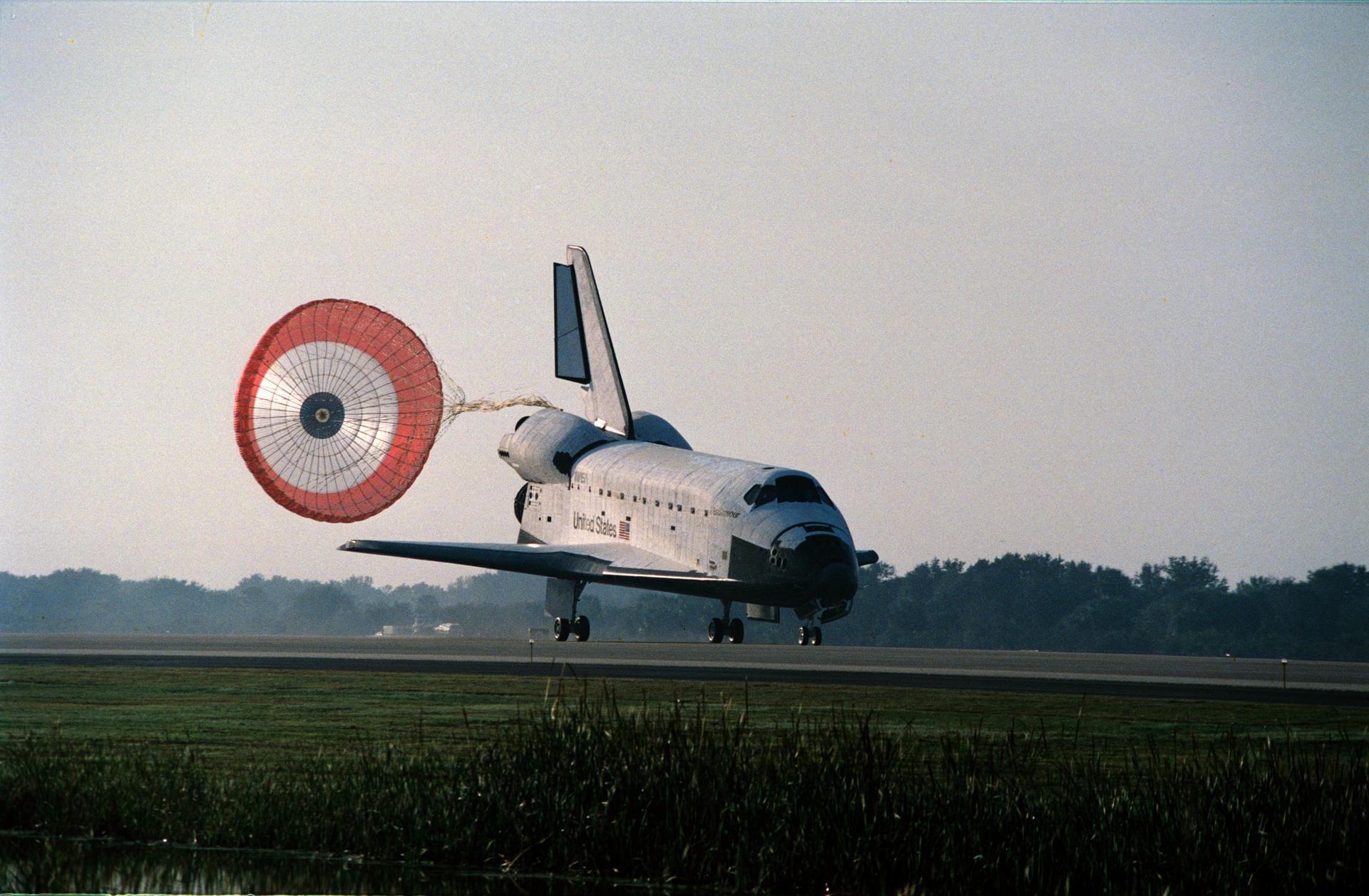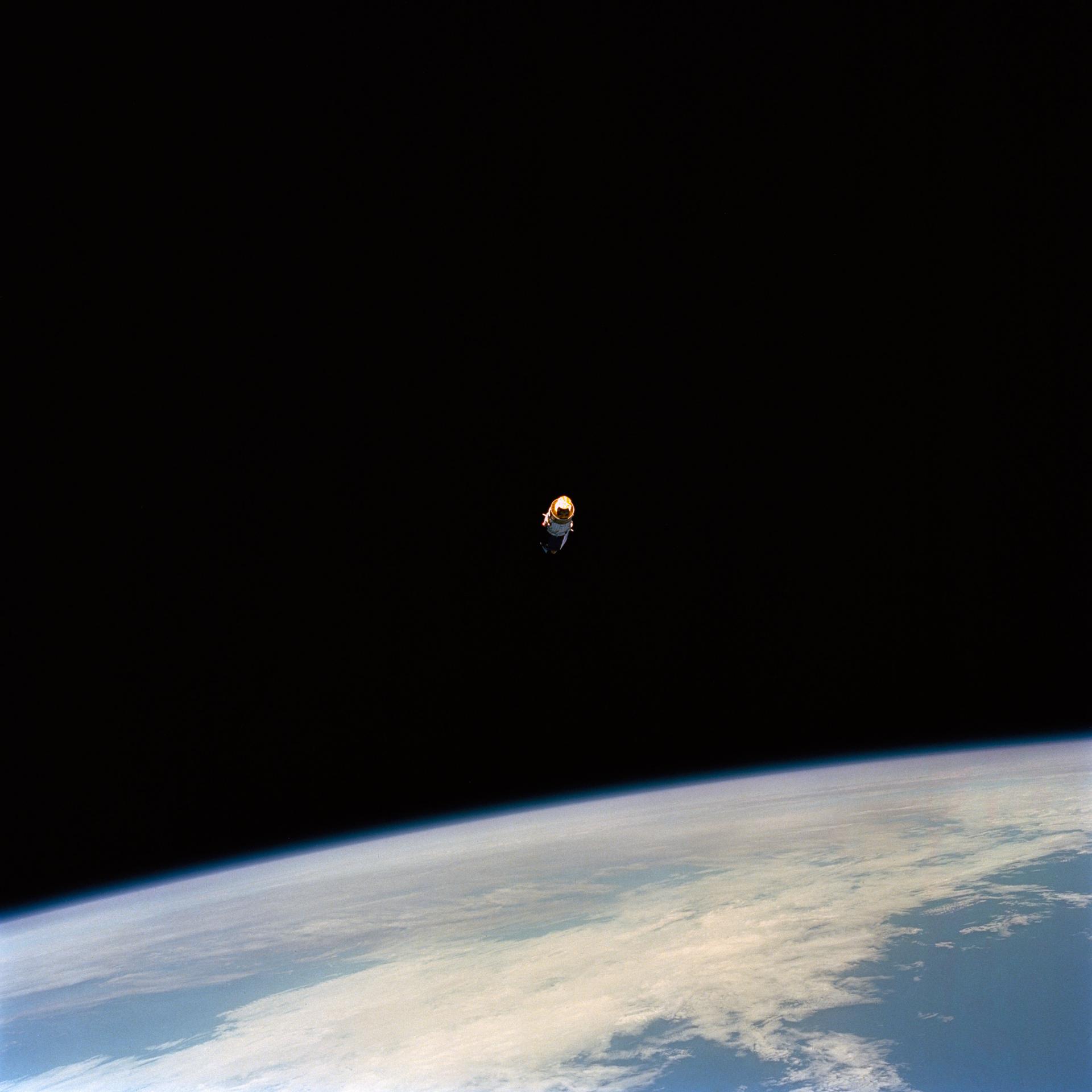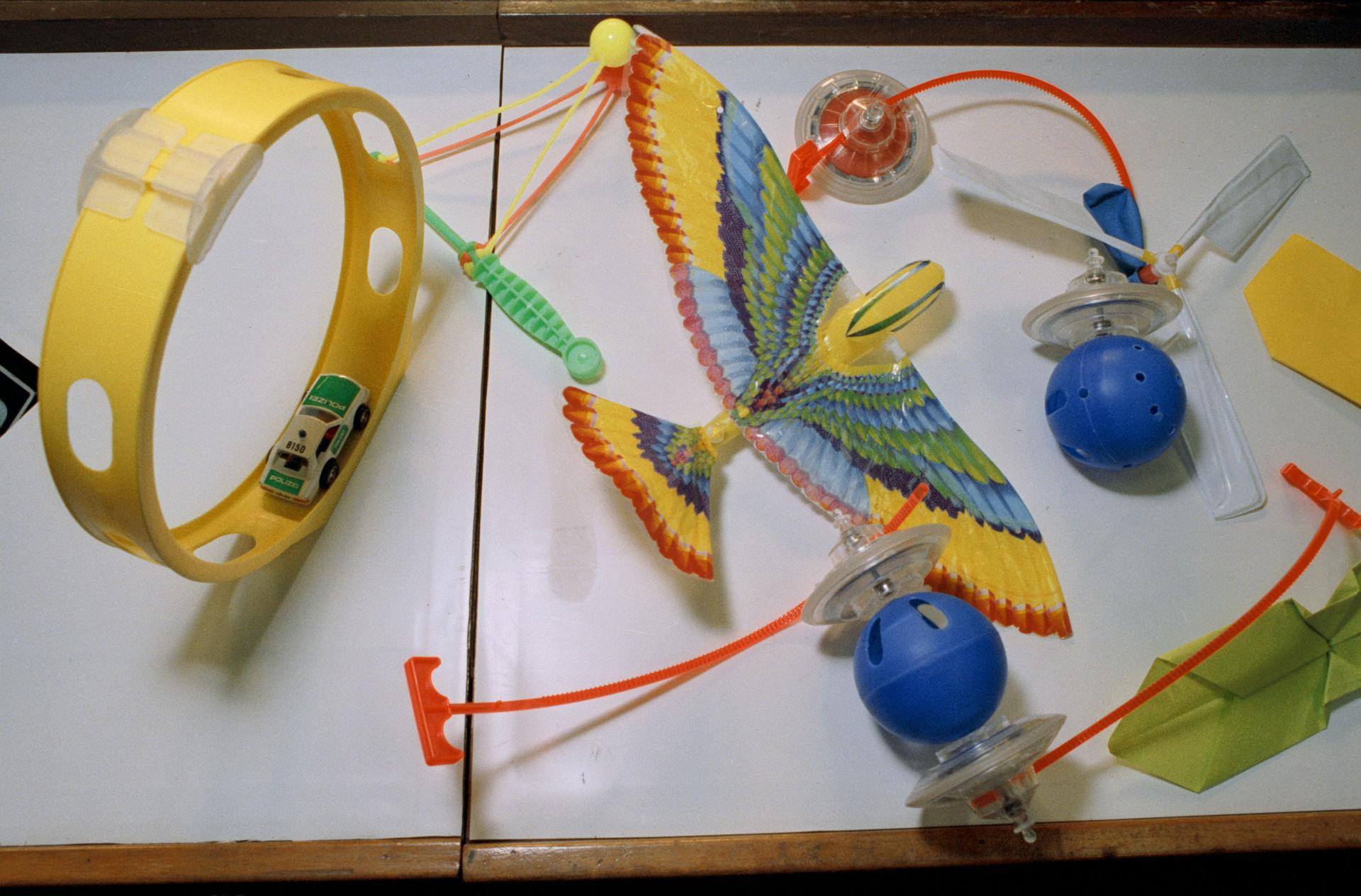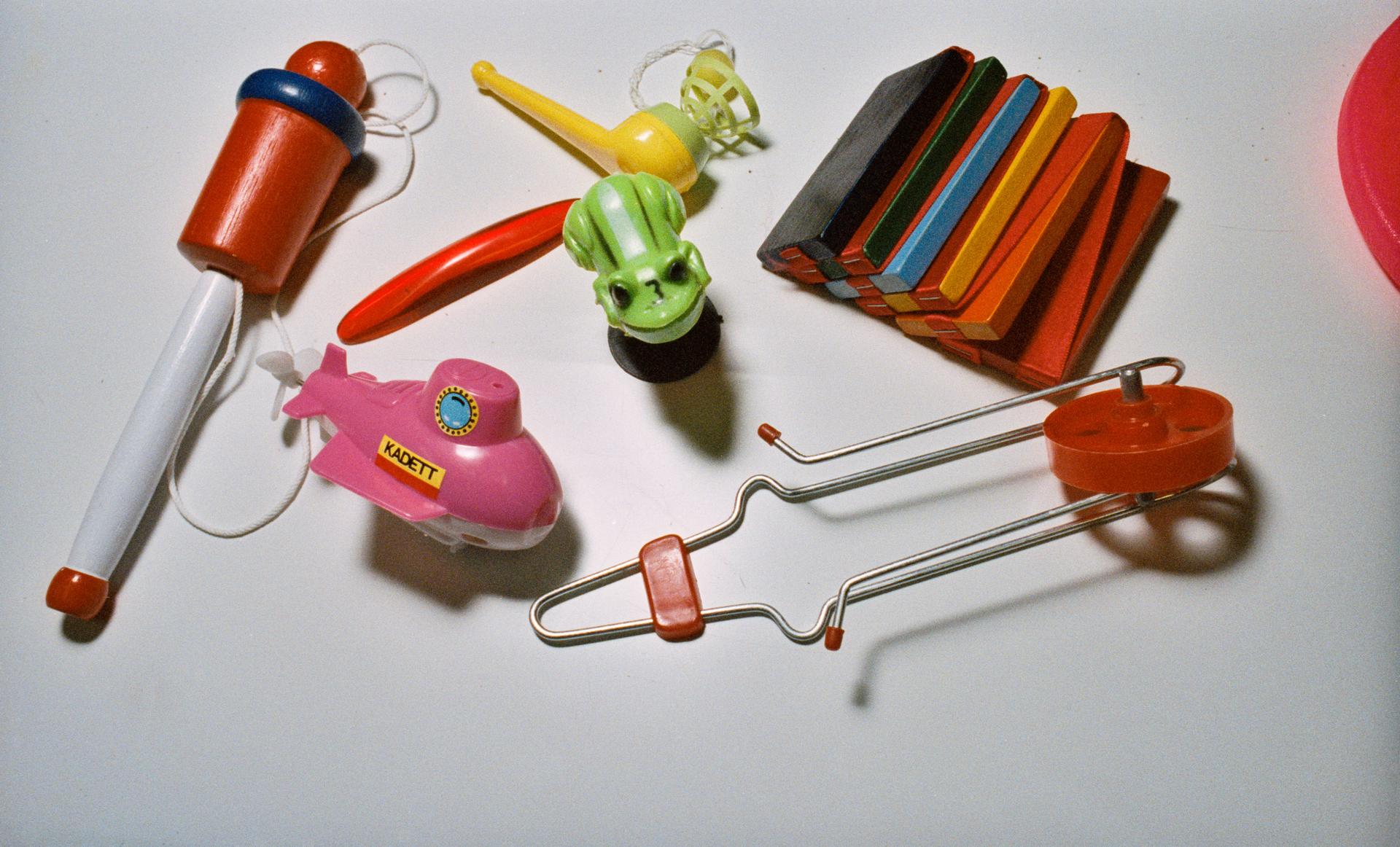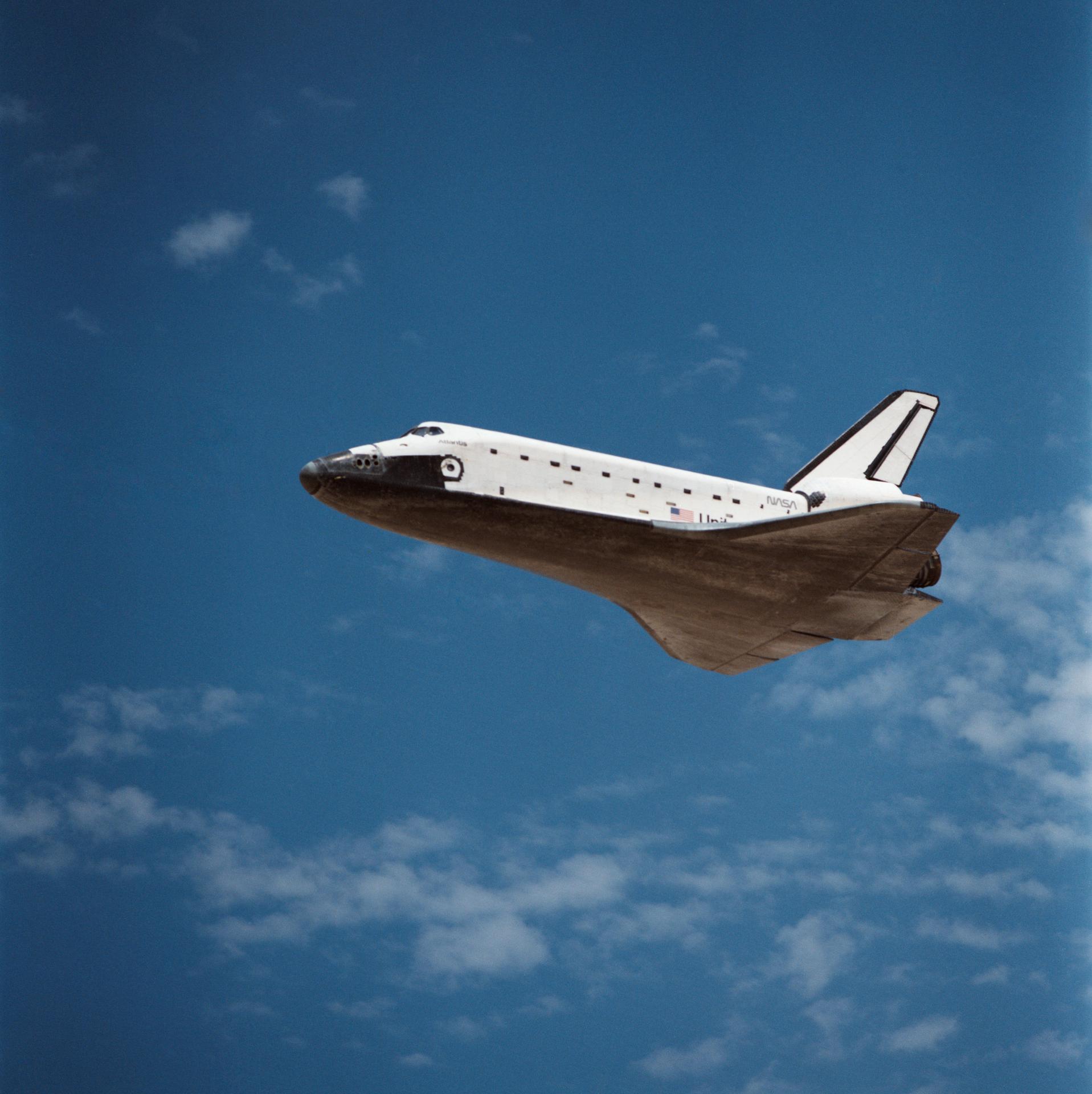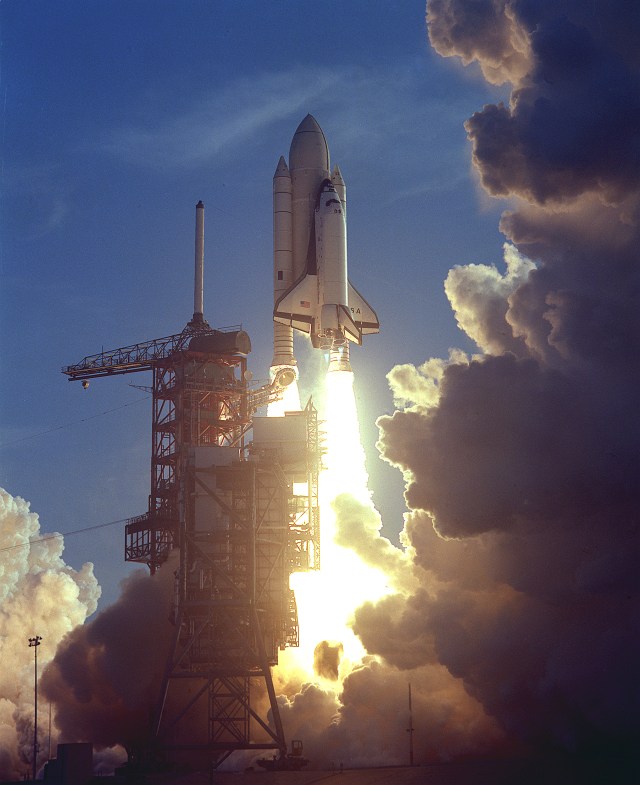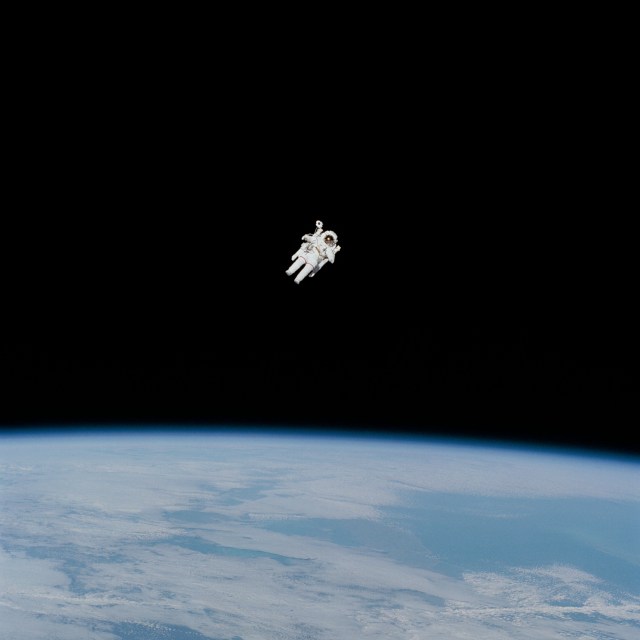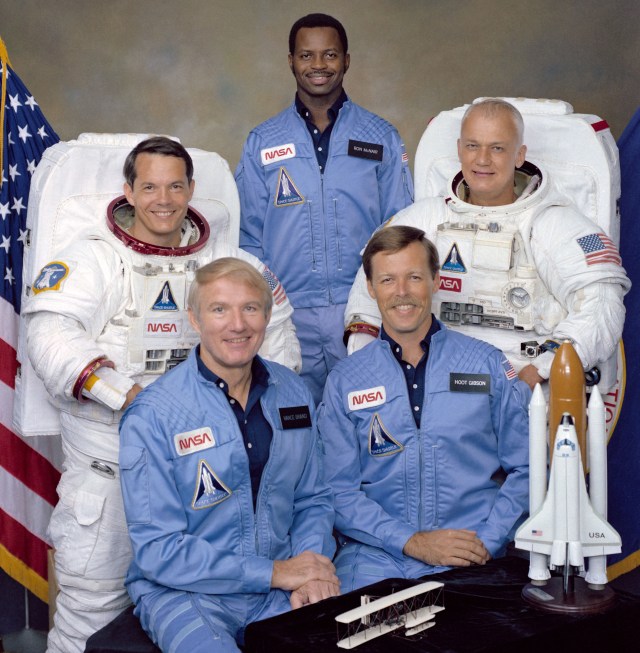
STS-54
Deployment of the Tracking and Data Relay Satellite (TDRS-F).
orbiter
mission duration
Launch
Landing
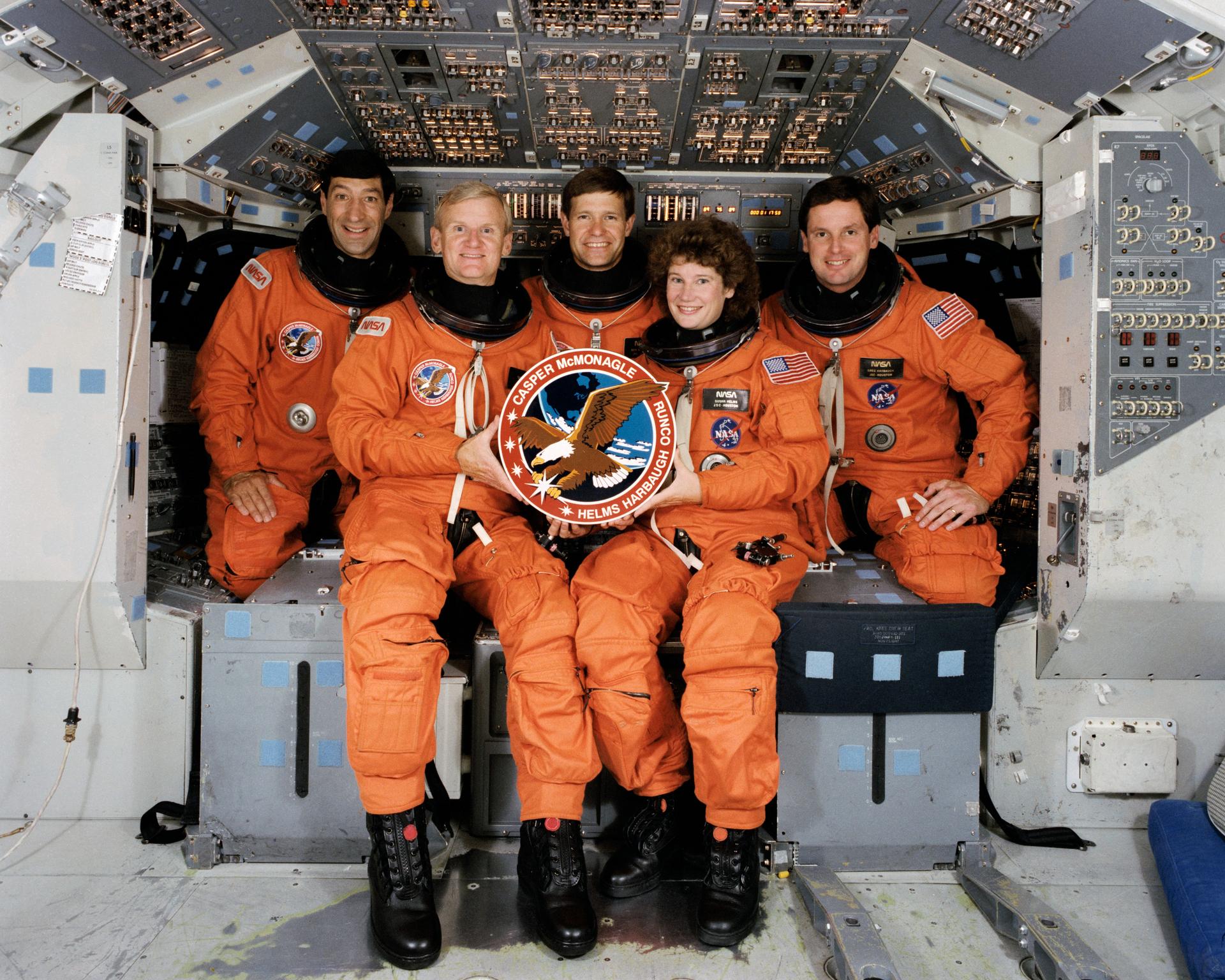
STS-54 Mission Facts
Mission: TDRS-F; DXS
Space Shuttle: Endeavour
Launch Pad: 39B
Launched: January 13, 1993, 8:59:30 a.m. EST
Landing Site: Kennedy Space Center, Florida
Landing: January 19, 1993, 8:37:49 a.m. EST
Runway: 33
Rollout Distance: 8,724 feet
Rollout Time: 49 seconds
Revolution: 96
Mission Duration: 5 days 23 hours 38 minutes 19 seconds
Orbit Altitude: 165 nautical miles
Orbit Inclination: 28.45 degrees
Crew
John H. Casper, Commander
Donald R. McMonagle, Pilot
Mario Runco, Jr., Mission Specialist
Gregory J. Harbaugh, Mission Specialist
Susan J. Helms, Mission Specialist
Mission Highlights
The primary payload was the fifth Tracking and Data Relay Satellite (TDRS-F) which was deployed on day one of the mission. It was later successfully transferred to its proper orbit by the Inertial Upper Stage booster.
Also carried into orbit in the payload bay was a Hitchhiker experiment called the Diffuse X-ray Spectrometer (DXS). This instrument collected data on X-ray radiation from diffuse sources in deep space.
Other middeck payloads to test the effects of microgravity included the Commercial General Bioprocessing Apparatus (CGPA) for-life sciences research; the Chromosome and Plant Cell Division in Space Experiment (CHROMEX) to-study plant growth; the Physiological and Anatomical Rodent Experiment (PARE) to examine the skeletal system and the adaptation of bone to space flight; the Space Acceleration Measurement Equipment (SAMS) to measure and record the microgravity acceleration environment of middeck experiments; and the Solid Surface Combustion Experiment (SSCE) to measure the rate of flame spread and temperature of burning filter paper.
Also, on day five, mission specialists Mario Runco and Greg Harbaugh spent nearly 5 hours in the open cargo bay performing a series of space-walking tasks designed to increase NASA’s knowledge of working in space. They tested their abilities to move about freely in the cargo bay, climb into foot restraints without using their hands and simulated carrying large objects in the microgravity environment.
STS-54
Shuttle News
Retired Space Shuttle Locations
Shuttle Atlantis – Kennedy Space Center Visitor Complex Shuttle Discovery – Steven F. Udvar-Hazy Center Shuttle Endeavour – California Science…
Read the Story



























